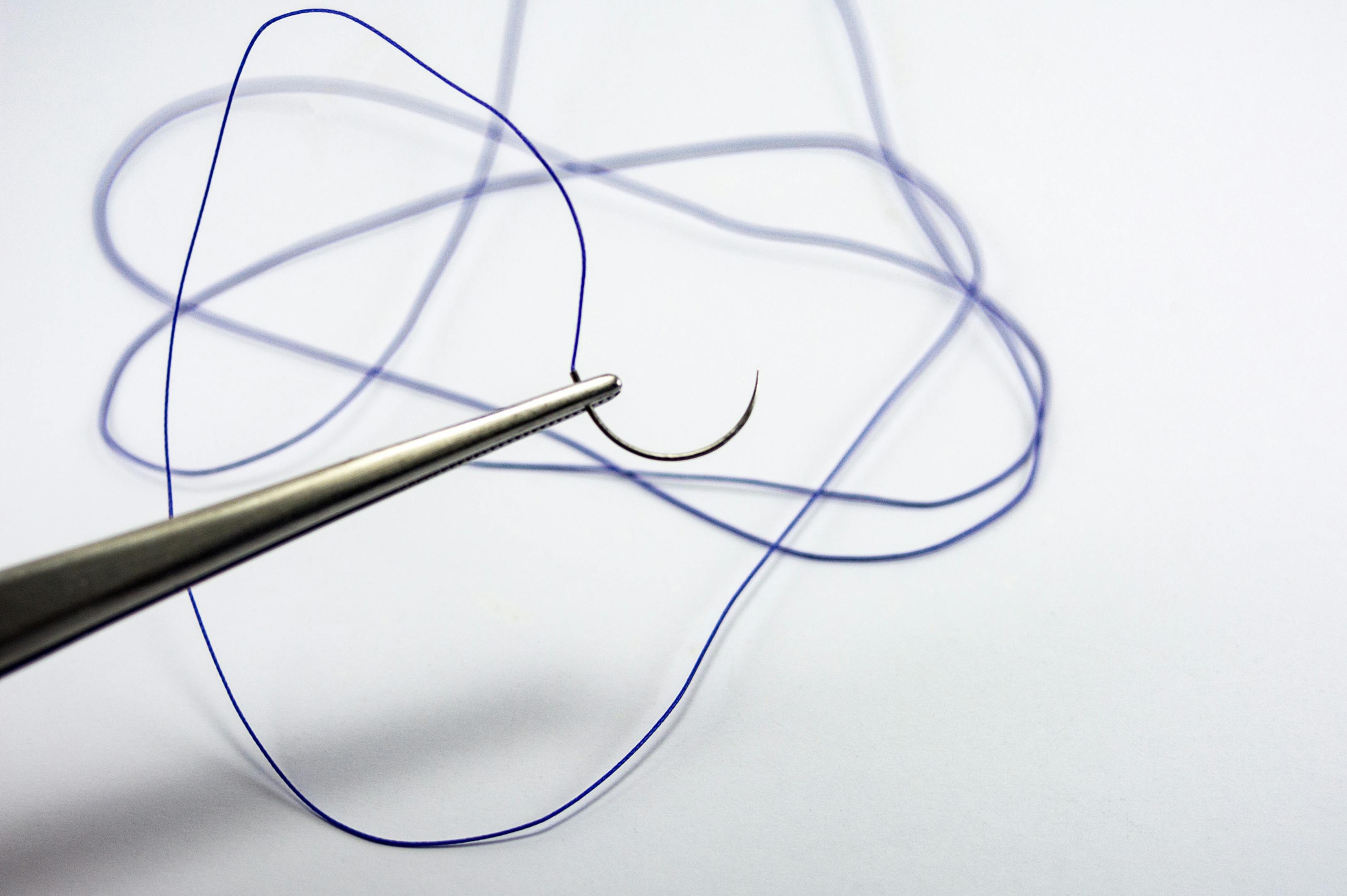Electrical stitches speed wound healing
When you think of electricity in your body, you probably think of your heart. But it’s not the only major organ that uses electrical impulses.
You probably know that nerve and muscle cells rely on electricity to function. But electricity also directs traffic when it comes to wound healing, telling new cells where to go.

The story: This function has inspired a class of medtech products called electroceuticals. The newest such product is absorbable electrical stitches, which have helped speed wound healing in rat studies.
The problem with sutures: Sutures have been used to close wounds and incisions for much longer than most other medical innovations we discuss here have existed. So, why the upgrade?
- Most sutures used in surgery today are absorbable, which lowers the risk of further wound trauma during removal. Yet, these biocompatible stitches don’t do much to speed wound healing and thus minimize the risk of infection.
- To help sutures better promote wound healing, previous innovative approaches have involved adding drugs or growth factors.
- However, these approaches often either were short lasting or caused unpleasant side effects (i.e., wound-site allergic reactions).
Where does the electricity come from?: The electrical sutures rely on something called the triboelectric effect, which causes static electricity.
- This phenomenon, which relies on the friction between two surfaces rubbing together, has been used to explore medtech devices self-powered medical implants.
- In an electrical suture, the two surfaces touching and separating are the core and sheath, which enables electron transfer between them.
- This source of power also takes advantage of a common pitfall with standard sutures: daily movement. Whereas movement can strain standard stitches, it helps electrical stitches generate power.
Bring in the electricity: Electrical sutures aren’t the first electroceutical approach to wound healing.
- Previous electrotherapy devices were bulky and expensive, relying on external batteries to work.
- More recently, absorbable e-bandages developed for chronic wounds (i.e., the chronic foot ulcers plaguing many diabetes patients) lightly zap tissue to promote healing.
- The research team beyond the electrical sutures previously developed fibers for the electronics industry, working on products such as sensors. This is their first foray into the biomedical world.
We’re excited by the way this story exemplifies how advancements in one industry often trickle down to medtech. It’s a great reason to support multidisciplinary teams in medical innovation—these are the scientists and entrepreneurs who can really think outside the box.